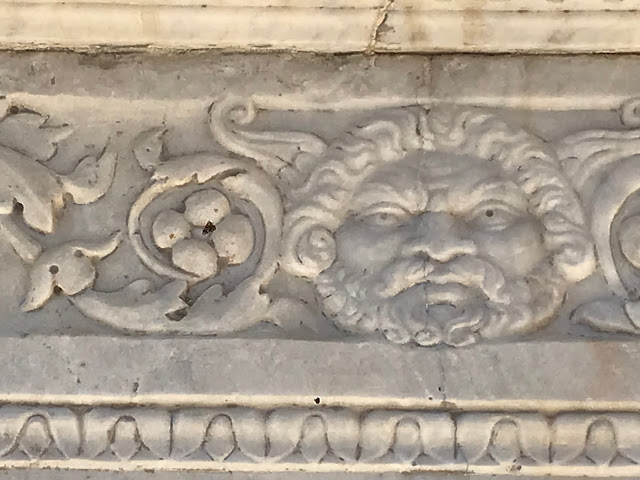April 24, 2022
68 degrees, sunny. A day to make you want to sing for the joy of being alive!
“The smallest evil if neglected, will reach the greatest proportions.” ― Pliny the Younger, Graffiti and other Sources on Pompeii and Herculaneum
The eruption of Vesuvius in April of 79 AD was, if not evil, at least disaster of greatest proportions. There was no help for it except not to have settled at the foot of the massive volcano. In 2018, we visited Pompeii, which was destroyed in minutes by hot ash, poisonous gasses and pumice stones that rained down on the panicked populace. Today, we visited Herculaneum, a smaller town of about 5000 souls, that was covered, not with ash, but with volcanic mud and lava.
 |
| This picture gives you an idea of how deeply the site was buried. |
 |
This imposing fellow was Marcus Onius Balbus. His name is unfamiliar to me, but he was a politician of some sort, governor of Crete for a time. He made sure Herculaneum had all the comforts of much larger cities--public baths, running water (sadly, in lead pipes. If they hadn't died in the eruption, lead was slowly poisoning the populace), central heating (Hypocausts spreading warm air under the floors) and an underground sewer system instead of using the sloping streets to carry away its filth like Pompeii did.
Sometimes I worry that we are touring scenes of disaster and ruin at each stop, but in some respects, that is the story of our species. We are capable of achieving great things, of creating beauty, but we are not all powerful. Many things are out of our control, destructive forces that even today cannot be foreseen.
Today the mountain is rigged with sensors and monitored 24/7. That's because millions of people still live in what's called the "red zone" if there should be another eruption. And scientists have discovered that Vesuvius is connected underground to a super caldera that now forms Naples' harbor.
Vesuvius' last eruption was in 1944, during which the opening at the top was plugged up with pumice, ash and lava. Kind of puts me in the mind of a pressure cooker...
 |
| Will Vesuvius erupt again? I'm betting it will... |







No comments:
Post a Comment
I'd love to hear from you. Leave a comment and let's chat!